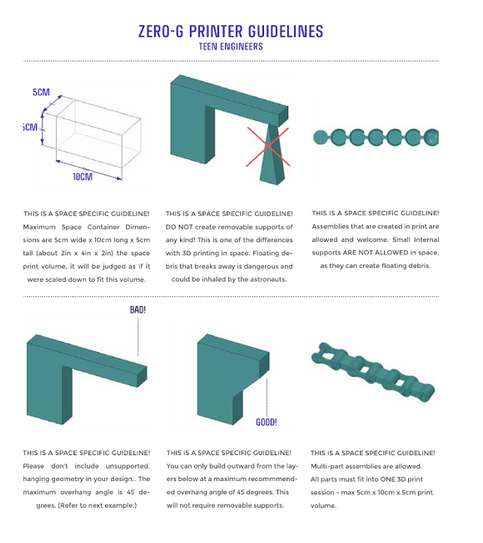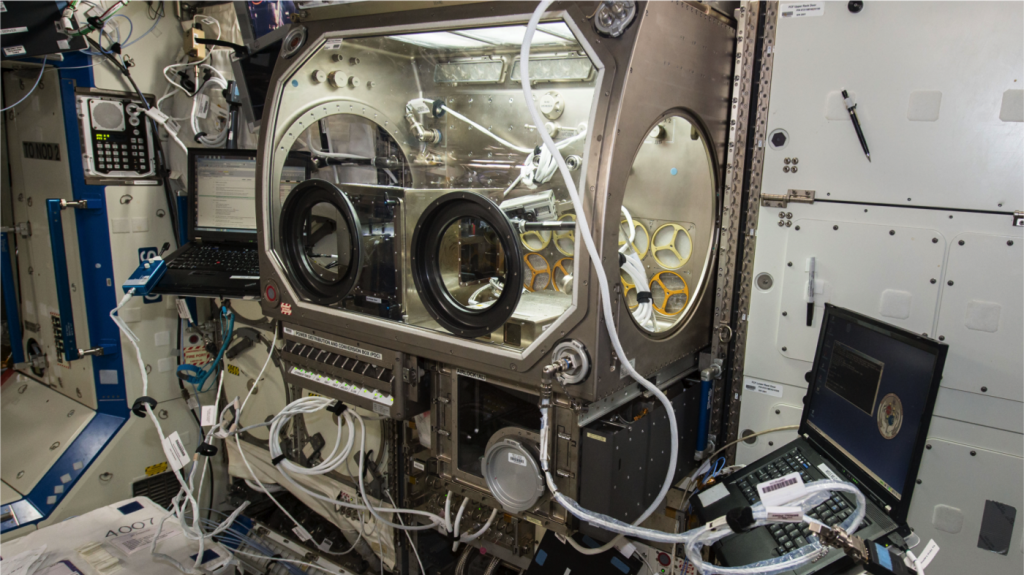
Phil Cotton
Just the fact that we are talking about 3D printing in space is sort of mindblowing. Considering that most of the world barely knew about 3D printing several years ago, putting it together with space is a progressive, futuristic–and very exciting–conversation. It’s one that we cover often, from the realistic to what still seems pretty outlandish.
As is the case everywhere else, 3D printing has its merits in space–tremendous merits, in fact. With self-sustainability being a key bonus element to the incredibly progressive technology, 3D printing is a highly attractive idea to NASA. They aren’t just thinking about it though, as most of us know upon following the arrival of the SpaceX Dragon supply freighter to the ISS, delivering a vast amount of supplies which included one very special item: the Made in Space Zero-G 3D printer.
 We continued to follow all of the items fabricated, from basic small items to 3D printed wrenches. As stories followed regarding items being made, it started to seem almost slightly normal that our astronauts were up in the heavens 3D printing with glee–and it began to seem more feasible that perhaps 3D printing might truly open up the possibilities of colonizing space.
We continued to follow all of the items fabricated, from basic small items to 3D printed wrenches. As stories followed regarding items being made, it started to seem almost slightly normal that our astronauts were up in the heavens 3D printing with glee–and it began to seem more feasible that perhaps 3D printing might truly open up the possibilities of colonizing space.
Something we never really thought about though regarding astronauts 3D printing at the ISS are all the gravity issues, resulting in a number of safety issues. Space debris and ‘junk’ in general is a huge issue for space travel as hundreds of thousands of pieces of the stuff travel at unfathomable speeds and always pose potential danger in terms of damaging the exterior of the space station. According to NASA, that can actually be one of the greatest risks to space missions. So, with all that’s going on outside the walls of the space station, they certainly don’t want debris causing trouble inside. While NASA has to consider every angle, most of the public has not had to consider these details in travel, or daily life at the ISS.
 Phil Cotton has brought this to light with a document from Future Engineers that he uncovered, meant for ‘teen engineers,’ concerning Zero-G Printer Guidelines in Space. Had you ever considered whether or not it’s okay to 3D print, using supports, in space? It’s not okay–for a very important reason. Support materials, including even those tiny internal ones, can turn into floating debris that are not only hazardous simply due to that, but they can be unintentionally inhaled by astronauts.
Phil Cotton has brought this to light with a document from Future Engineers that he uncovered, meant for ‘teen engineers,’ concerning Zero-G Printer Guidelines in Space. Had you ever considered whether or not it’s okay to 3D print, using supports, in space? It’s not okay–for a very important reason. Support materials, including even those tiny internal ones, can turn into floating debris that are not only hazardous simply due to that, but they can be unintentionally inhaled by astronauts.
Also prohibited are “unsupported hanging geometries.” The maximum overhang angle allowed is 45 degrees.
“You can only build outward from the layers below at a maximum recommended overhang angle of 45 degrees. This will not require removable supports,” states the Future Engineers document.
They go on to state, for those who are involved in 3D printing projects while in space, that while assemblies involving multiple parts are allowed, all parts must fit into one 3D printing session at a maximum of 5 x 10 x 5 cm volume.
Dedicated to combining space and innovations by students, Future Engineers is a company built around an educational platform that designs challenges for young people, and also hosts the 3D Printing in Space Challenges powered by the ASME Foundation. Their challenges are a White House Maker Education Initiative and a STEAM Education Program.
Discuss your thoughts on these latest findings in the 3D Printing in Space forum thread over at 3DPB.com.
Subscribe to Our Email Newsletter
Stay up-to-date on all the latest news from the 3D printing industry and receive information and offers from third party vendors.
You May Also Like
NSF Awards Kentucky $1M for Advanced Manufacturing
The National Science Foundation has awarded a $1 million grant to the University of Louisville for the Advancing Manufacturing and Building Construction Technologies (NSF AMT) project. This initiative is part...
3D Printing News Briefs, May 11, 2024: 3D Printed Stent, Tower, Sculptures, & More
We’re starting off with medical research in today’s 3D Printing News Briefs, as researchers in Korea used CT images and 3D printing to fabricate an educational simulator for a mastoidectomy....
3D Printing Unpeeled: Wind Turbines, Probiotics and Lenses
TPI Composites, ORNL and Ingersoll Rand are working to make wind turbine tooling segments that can be 18.3 meters long. These elements also include resistive wires that help keep the...
Tethon 3D Releases Cost-effective Bioprinter
Tethon 3D, known for its ceramic-loaded DLP materials, custom resins, and DLP 3D printers, has recently released a bioprinter. Vat polymerization printers like DLP systems have been widely used by...

































